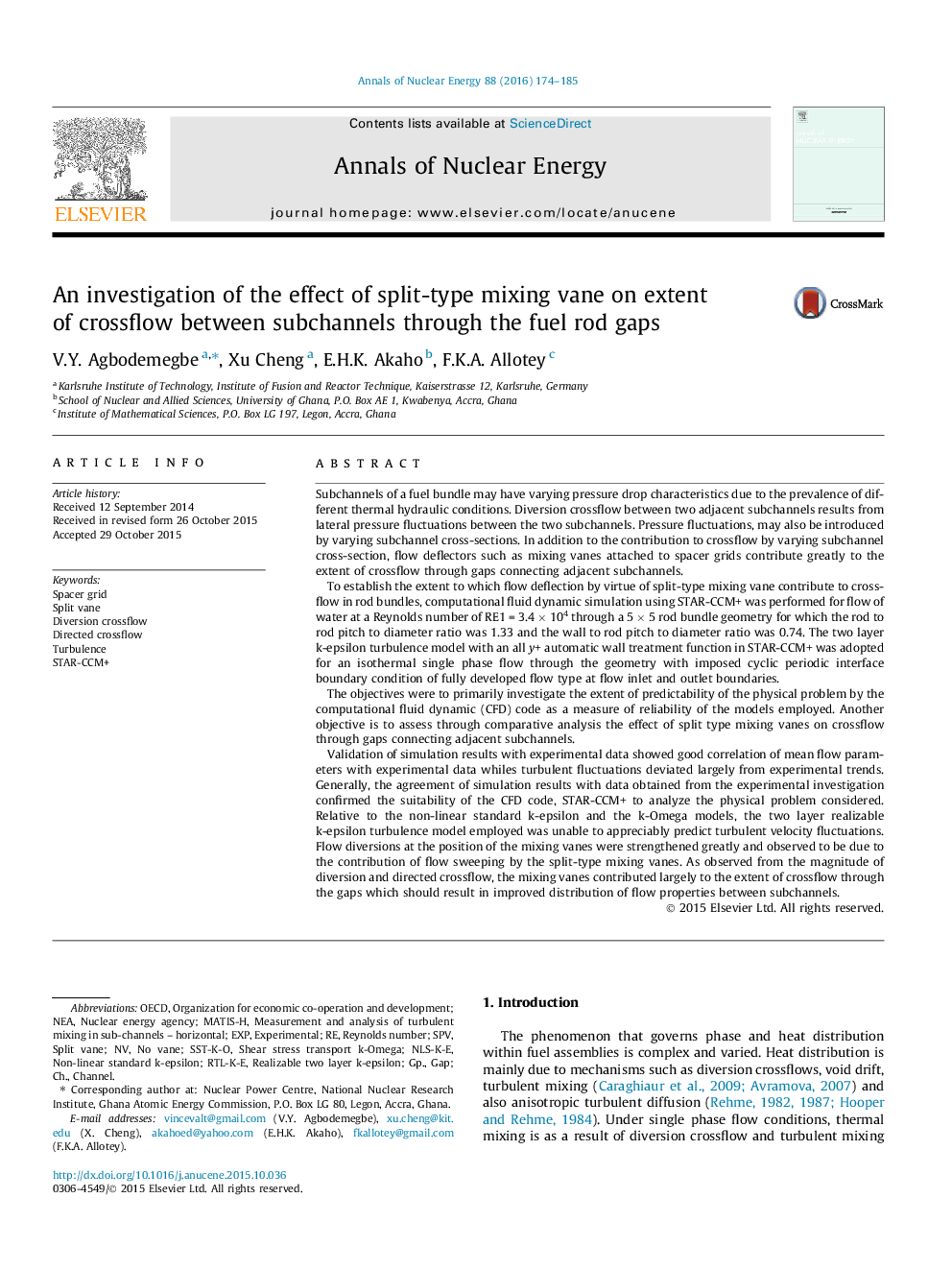| Article ID | Journal | Published Year | Pages | File Type |
|---|---|---|---|---|
| 8067903 | Annals of Nuclear Energy | 2016 | 12 Pages |
Abstract
Validation of simulation results with experimental data showed good correlation of mean flow parameters with experimental data whiles turbulent fluctuations deviated largely from experimental trends. Generally, the agreement of simulation results with data obtained from the experimental investigation confirmed the suitability of the CFD code, STAR-CCM+ to analyze the physical problem considered. Relative to the non-linear standard k-epsilon and the k-Omega models, the two layer realizable k-epsilon turbulence model employed was unable to appreciably predict turbulent velocity fluctuations. Flow diversions at the position of the mixing vanes were strengthened greatly and observed to be due to the contribution of flow sweeping by the split-type mixing vanes. As observed from the magnitude of diversion and directed crossflow, the mixing vanes contributed largely to the extent of crossflow through the gaps which should result in improved distribution of flow properties between subchannels.
Keywords
Related Topics
Physical Sciences and Engineering
Energy
Energy Engineering and Power Technology
Authors
V.Y. Agbodemegbe, Xu Cheng, E.H.K. Akaho, F.K.A. Allotey,
